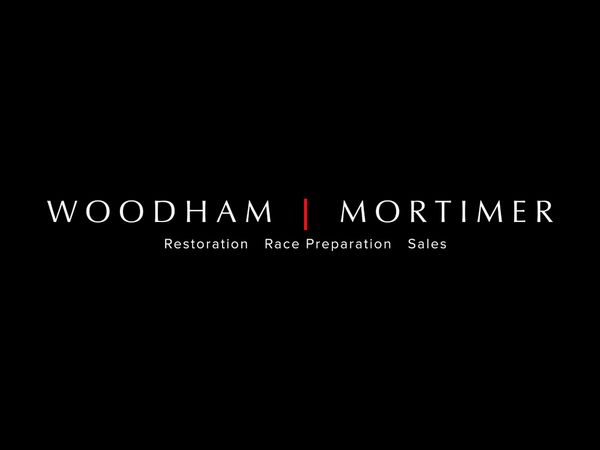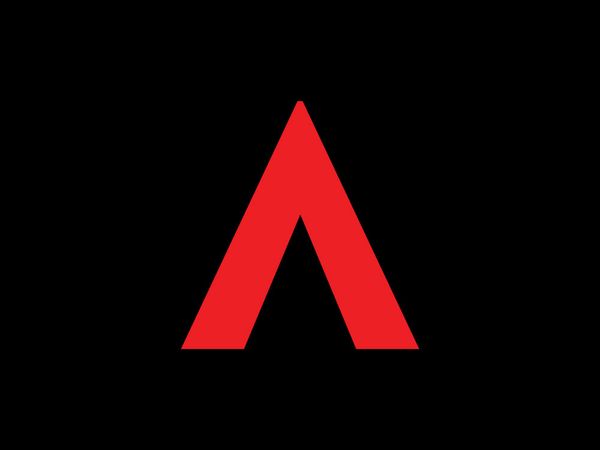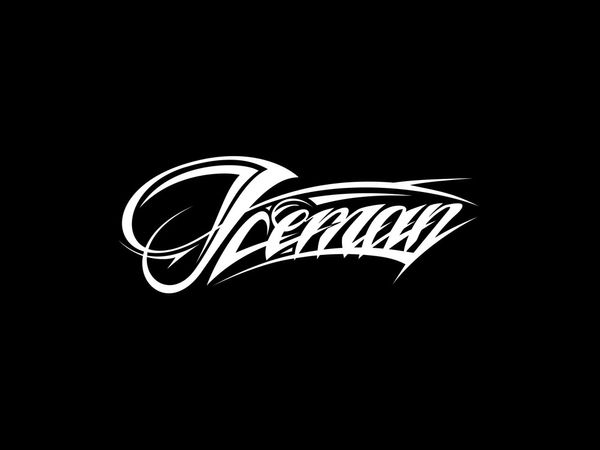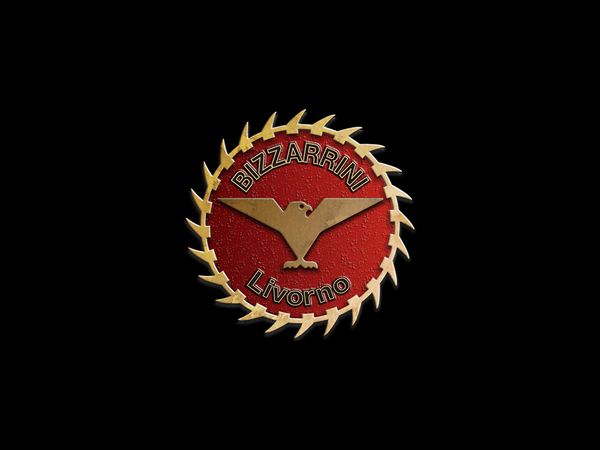After racing along the French Riviera in Monaco, Haas F1 Team and the rest of its counterparts in the FIA Formula One World Championship head to Montreal, home to the Canadian Grand Prix at the Circuit Gilles Villeneuve within Parc Jean-Drapeau on the St. Lawrence River.
The 4.361-kilometer (2.710-mile), 14-turn circuit has hosted Formula One since 1978, and in its 37th grand prix to be contested June 12, it hosts 11 organizations including Haas F1 Team, the first American Formula One team in 30 years.
Haas F1 Team comes into Round 7 of the 21-race Formula One schedule eighth in the constructor standings, two points behind seventh-place McLaren and 16 points ahead of ninth-place Renault. Twenty-two points have been earned by Haas F1 Team via three point-paying finishes, the most of any new team in this millennium. When Jaguar debuted in 2000 and when Toyota came on the scene in 2002, each entity managed only two point-paying finishes in their entire first seasons for a combined total of six points.
Romain Grosjean has earned all 22 points for Haas F1 Team, but teammate Esteban Gutiérrez is poised to add to that tally. With back-to-back 11th-place finishes in Barcelona and Monaco, Gutiérrez is knocking on the door of a point-paying result.
In two career Formula One starts at Circuit Gilles Villeneuve, Gutiérrez has a best finish of 14th, earned in the 2014 Canadian Grand Prix. Grosjean has four career starts in the Canadian Grand Prix, and his first was his best – a second-place run in 2012. As the duo return to the most populous city in the province of Quebec, they look to return to the front-running form shown when Grosjean finished sixth in the season-opening Australian Grand Prix and fifth in Round 2 at the Bahrain Grand Prix.
An in-season test following the fifth race of the season in Barcelona allowed Haas F1 Team to further develop its racecar and come to grip, literally, with the Pirelli P Zero Purple ultrasoft tire, which made its racing debut in the Monaco Grand Prix. The ultrasoft compound is the softest tire in Pirelli’s range, with rapid warming and massive performance. It is best used on tight and twisting circuits where mechanical grip is at a premium.
Haas F1 Team is employing an aggressive tire strategy at Montreal, choosing to use just two of the three tire compounds provided by Pirelli. Only three sets of the P Zero Yellow softs have been selected for each driver, with the remaining 10 sets to each driver consisting of ultrasofts. The P Zero Red supersofts have been totally eschewed by Haas F1 Team.
The Circuit Gilles Villeneuve is a semi-street circuit with long straights and tricky hairpins. It’s a low downforce track, notorious for hard-braking zones and the Wall of Champions – an unforgiving barrier on the track’s final chicane that can make world champions feel like world chumps.
It’s a challenging layout offset by Montreal’s charm, a juxtaposition highlighted by the wheel-to-wheel racing amid the remnants of Expo 67 and the 1976 Summer Olympics. And where medals were earned by Olympians from around the globe 40 years ago, Grosjean and Gutiérrez will put the pedal to the metal in pursuit of points and, potentially, a podium of their own.
Circuit Gilles VilleneuveCircuit Length: 4.361 km (2.710 miles)Laps: 70Race Distance: 305.270 km (189.686 miles)Broadcast: NBC - 1 p.m. ET (Pre-Race) / 2 p.m. ET (Lights Out)
Guenther Steiner:Both drivers mentioned at Monaco that despite their result, they felt more comfortable with the car. What’s different from what they experienced in Spain?
“In just doing the test in Barcelona after the Spanish Grand Prix, we gained back confidence in what we were doing. In China and in Russia, we struggled with finding the proper working range of the tires. Now, we just have more confidence in our whole package. We’re back to where we were at the beginning of the season.”
As the season has progressed, what has been the rate of development for teams in Formula One? Does it seem to ratchet up another few notches because the drivers and teams get more and more experience with their car?
“Absolutely, because there is no testing allowed anymore during the season except for the two days we had in Spain. The testing is done at the racetrack, and every time you drive the car, you learn. The drivers learn more about the car and how to set it up. If you have problems like we’ve had on Fridays and Saturdays, you don’t learn so much. The more you can run, the more you learn. At the same time, the gains we make get smaller and smaller because we’re constantly fine tuning, and so is everyone else.”
The Circuit Gilles Villeneuve is a semi street circuit. Is there anything you can take from Monaco and apply to Montreal, especially considering Pirelli is bringing the same tire compounds?
“Pirelli is bringing the same tires – the ultrasoft, supersoft and soft. We’re only using the ultrasoft and soft. It’s a challenge to find the perfect working ranges for these tires. We’ve never had the ultrasoft in Canada. It just debuted in the last race at Monaco. We need to see how that tire works, specifically, in Canada.”
You’ve gone with a pretty aggressive tire strategy for Montreal – no supersofts, only three sets of softs and 10 sets of ultrasofts for each driver. Only you and Renault have opted for no supersofts. What’s the methodology behind this decision?
“We only tested the ultrasofts once before making the decision to use them in Canada, and that was in Barcelona. We will see in Canada if we made the right decision. We know more about the ultrasofts now after having used them in Monaco. We just need to do our best to make them work as best as possible.”
Canada is known as the hardest-braking grand prix of the year. What do you need to make the most of your car’s braking capability, and how do your drivers manage their brakes for the entire, 70-lap race?
“The biggest thing is the confidence of the driver in the brakes. More confidence means more speed. They need to be confident that the brakes always operate the same, at the same point, at the same time. That is the most important thing. The team can monitor the wear with telemetry, so if we get in danger we can actually tell the driver over the radio that they’re having a problem.”
Last year when you came to Montreal as a spectator, you were asked by media where you would like Haas F1 Team to be when it arrived at the Circuit Gilles Villeneuve in 2016. You said that you hoped you had scored some points by then and were putting forth a respectable effort. Mission accomplished?
“I think what we promised, we did. We are respectable and we have some points, but you always want more. That’s racing. You’re never happy with what you’ve got, and you always want more.”
Montreal marks the first stint of back-to-back races, as the new Baku City Circuit debuts the very next weekend. Considering that Montreal and Baku are both flyaway races, how difficult are the logistics of moving a team across an ocean when you only have two days to pack up from one venue and arrive at another?
“It’s hard work for the team. The logistics are very well organized for F1 and for the teams, but people need to work late and get up early and fly direct to Baku. A lot of people fly direct with a charter plane from Montreal to Baku. It’s very demanding schedule.”
Knowing that the turnaround time between Montreal and Baku is incredibly tight, how important is it for both racecars to finish the Canadian Grand Prix in one piece?
“For sure it’s important, but if something happens, we’re ready.”
Earlier this year, Haas F1 Team was fifth in the constructor standings. Heading into Round 7 at Montreal, it’s eighth in the constructor standings. Are you paying attention to the points, or is your approach more about putting forth the best effort and letting the chips fall where they may?
“We always put forth the best effort. Where we end up is difficult to predict, because other people score points too. For sure, we keep an eye on the points. We are eighth now and want to be better than that, and we’re putting in a lot of effort to achieve that.”
Romain Grosjean:
You mentioned at Monaco that despite the result, you felt more comfortable with the car. What are you feeling in the car that’s different from what you experienced in Spain?
“The car reacted much better to what we were doing, and to my driving style. That was a good thing, and a good direction. We got back to more common settings and worked from there.”
The Circuit Gilles Villeneuve is a semi street circuit. Is there anything you can take from Monaco and apply to Montreal, especially considering Pirelli is bringing the same tire compounds from Monaco?
“It’s a city circuit, but very different from Monaco. There are a few things we can bring forward, but not much.”
Canada is known as the hardest-braking grand prix of the year. What do you need to feel in the car to make the most of your car’s braking capability, and how do you manage your brakes for the entire, 70-lap race?
“Hopefully, we don’t have to manage the brakes too much, which is normally a good thing for a driver. For the setup, you want a stable car for the braking. You also want the confidence to be able to brake late and to not have any instability or locking up on the entry phase into a corner.”
Montreal is home to one of your best finishes in Formula One – a second-place effort in 2012. What do you remember about that race and how did you achieve that result?
“That was a great race. I started P7. I had a one-stop strategy while everyone else was on a two-stop strategy. Initially, I thought I would finish fifth or sixth as I was stuck behind the Mercedes of (Nico) Rosberg. I couldn’t overtake. Then, everyone pitted. The ones who didn’t were really struggling with grip, so I could overtake them. I didn’t quite have the pace to chase Lewis (Hamilton) and take the win.”
How important was that second-place finish at Montreal in 2012 during that early portion of your Formula One career?
“It was a great race and, obviously, a great result. I always try to do my best. It was a good race. I enjoyed it. It’s always important to strive for the highest finish you can and be as high on the podium as possible.”
What is your favorite part of the Circuit Gilles Villeneuve?
“I like the whole circuit. I’ve always loved it and really enjoy racing there. It’s always a great feeling.”
Describe a lap around Circuit Gilles Villeneuve.
“After the start-finish line you go into turn one. It’s tricky braking with a lot of front locking. You’re straight into turn two – a very bumpy hairpin. Then it’s the chicane. You use a lot of the curb and have to be careful on exit because of the wall. Then it’s another left and right corner with tricky braking. You come from the right-hand side corner flat out, and then there’s a long throttle application with a lot of g-force. Then you brake for turns eight and nine. Under the bridge, it’s very bumpy. It’s not so easy to get the grip of the car there. Then it’s the hairpin. Very big braking there. You try to carry some minimum speed and not lose too much time. You then need a good throttle application. Then there’s the famous chicane at the end of the lap, where you really want to brake as late as possible and carry as much speed as possible through that tricky part.”
Esteban Gutiérrez :
You mentioned at Monaco that despite the result, you felt more comfortable with the car. What are you feeling in the car that’s different from what you experienced in Spain?
“The more we know the car, the more comfortable and confident I feel. Every time we go out, I know a better direction to follow with the setup.”
Back-to-back 11th-place finishes have you knocking on the door of a point-paying result. How tight is the competition to finish in the points and how close do you think you are to getting a point-paying result?
“It’s been a challenging start to the season, but now we have some consistency and we can build a lot from that. I’ll keep pushing. And the team is doing a great job of learning more about the car, becoming more efficient in developing the car’s setup throughout the race weekend. We’re on track to achieve the results we want and earn as many points as possible.”
The Circuit Gilles Villeneuve is a semi street circuit. Is there anything you can take from Monaco and apply to Montreal, especially considering Pirelli is bringing the same tire compounds from Monaco?
“Montreal is a pretty low downforce track. It’s very smooth and there are many, many long straights. It’s usually a challenge to make the tires work, and I think that’s going to be the key point of the whole weekend.”
Canada is known as the hardest-braking grand prix of the year. What do you need to feel in the car to make the most of your car’s braking capability, and how do you manage your brakes for the entire, 70-lap race?
“It’s very similar to Monza, with a lot of long straights and low downforce. It’s important to have a good car mechanically. Hopefully, our car is well adapted to the circuit.”
What is your favorite part of the Circuit Gilles Villeneuve?
“I like all the chicanes because you can use a lot of curbs, which it makes it very exciting. I’m really looking forward to getting there and driving the track. It’s always great to be back in Montreal.”
Describe a lap around Circuit Gilles Villeneuve.
“You come into the first corner with a lot of speed. Then you get into turn two, which goes around and has a very difficult exit with some bumps. You arrive into the first chicane, where you can use a lot of curbs. Then you have a high-speed corner that is flat out, and you arrive into the next corner under braking, using a little bit of the track’s banking and the curb before exiting onto the following straight. It’s a very long exit. After that, there’s a medium-length straight that brings you to a hard-braking zone. It’s a very challenging entry because you tend to put a lot of speed in, which makes the exit difficult.
There’s a wall there too, so it can get pretty exciting. Then you come down to the hairpin, where it’s very big braking, very tricky on the entry. It’s a difficult corner, especially when you have low grip. It’s important to properly prepare the exit so you can take advantage of the longest straight on the track. That straight brings you to the last chicane, which has the Wall of Champions. It’s a very quick chicane and very interesting, because if you catch as much as you can on the curbs, absorbing a lot with the steering wheel and trying to make the corner as straight as possible, you gain a lot of lap time.”
Circuit Gilles Villeneuve
Total number of race laps: 70Complete race distance: 305.270 kilometers (189.686 miles)Pit lane speed limit: 80 kph (50 mph)This 4.361-kilometer (2.710-mile), 14-turn circuit has hosted Formula One since 1978, with last year’s Canadian Grand Prix serving as the venue’s 36th grand prix.Rubens Barrichello holds the race lap record at Circuit Gilles Villeneuve (1:13.622), set in 2004 with Scuderia Ferrari.Ralf Schumacher holds the qualifying lap record at Circuit Gilles Villeneuve (1:12.275), set in 2004 with Williams.Known for its tricky hairpin corners and long straights, Circuit Gilles Villeneuve is also known for its “Wall of Champions”. Located at the end of a very long, high-speed straight, the track’s final chicane (turns 13-14) has ensnared many drivers over the years, most notably in 1999 when three world champions – Michael Schumacher, Jacques Villeneuve and Damon Hill – all crashed in this spot. “Wall of Champions” was born, with its nearly non-existent runoff area consisting of a small curb and a narrow strip of asphalt.Circuit Gilles Villeneuve is one of four Formula One locations with ties to the Olympics, as its backstraight runs adjacent to the Olympic rowing basin used during the 1976 Summer Olympics. The Circuit de Barcelona – Catalunya was the site of the start/finish line for the road team time trial cycling event when Barcelona hosted the 1992 Summer Olympics. Sochi, site of the Russian Grand Prix where teams competed prior to Barcelona, hosted the 2014 Winter Olympics. And the Magdalena Mixhuca Sports City, in which the Autodromo Hermanos Rodriguez is located, hosted numerous events during the 1968 Summer Olympics in Mexico City.During the course of this weekend’s Canadian Grand Prix, lows will range from 13-17 degrees Celsius (55-63 degrees Fahrenheit) to highs of 21-26 degrees Celsius (70-78 degrees Fahrenheit). Relative humidity ranges from 46 percent (comfortable) to 87 percent (very humid), with a dew point varying from 6 degrees Celsius/43 degrees Fahrenheit (dry) to 17 degrees Celsius/63 degrees Fahrenheit (mildly humid). The dew point is rarely below 0 degrees Celsius/32 degrees Fahrenheit (dry) or above 20 degrees Celsius/69 degrees Fahrenheit (muggy). Typical wind speeds vary from 2-11 kph/1-7 mph (light air to light breeze), rarely exceeding 14 kph/9 mph (gentle breeze).DYK? Circuit Gilles Villeneuve is located in Montreal’s Parc Jean-Drapeau, named after the Montreal mayor who twice served the city, from 1954 to 1957 and again from 1960 to 1986. Drapeau organized Expo 67, which was Canada’s main celebration during its centennial year. The circuit lies on Notre Dame Island, a man-made island in the St. Lawrence River that was built up for Expo 67. The neighboring Saint Helen’s Island was artificially enlarged to accommodate the fairgrounds and still holds a prominent remnant from Expo 67 – the Biospehere, which can be seen regularly during television coverage of the Canadian Grand Prix.
Pirelli is bringing three tire compounds to Montreal:P Zero Yellow soft – less grip, less wear (used for long-race stints)This is one of the most frequently used tires in Pirelli’s range, as it strikes a balance between performance and durability, with the accent on performance. It is still geared toward speed rather than long distances, but it remains capable of providing teams with a competitive advantage at the beginning of the race where cars are carrying a full fuel load, and at the end of the race where the fuel load is much lighter and the race effectively becomes a sprint. It is a high working-range compound.P Zero Red supersoft – more grip, medium wear (used for shorter-race stints and for initial portion of qualifying)This is the second softest tire in Pirelli’s range, and it is ideal for tight and twisting circuits, especially in cold weather, when maximum grip is needed. The supersofts warm up rapidly, which has made it a stalwart choice for qualifying. But with increased grip comes increased degradation. It is a low working-range compound.P Zero Purple ultrasoft – highest amount of grip, highest amount of wear (used for qualifying and select race situations)This is a new tire in Pirelli’s lineup, debuting at the Monaco Grand Prix. It the softest tire in Pirelli’s range, with rapid warming and massive performance. It is best used on tight and twisting circuits that put a premium on mechanical grip. However, because it so soft, it has a limited lifespan. It is a low working-range compound.Two of the three available compounds must be used during the race. Teams are able to decide when they want to run which compound, adding an element of strategy to the race. A driver can also use all three sets of Pirelli tires in the race, if they so desire. (If there are wet track conditions, the Cinturato Blue full wet tire and the Cinturato Green intermediate tire will be made available.)Pirelli provides each driver 13 sets of dry tires for the race weekend. Of those 13 sets, drivers and their teams can choose the specifications of 10 of those sets from the three compounds Pirelli selected. The remaining three sets are defined by Pirelli – two mandatory tire specifications for the race (one set of P Zero Yellow softs and one set of P Zero Red supersofts) and one mandatory specification for Q3 (one set of P Zero Purple ultrasofts). Haas F1 Team’s drivers have selected the following amounts:Grosjean: three sets of P Zero Yellow softs, zero sets of P Zero Red supersofts and 10 sets of P Zero Purple ultrasoftsGutiérrez: three sets of P Zero Yellow softs, zero sets of P Zero Red supersofts and 10 sets of P Zero Purple ultrasofts



























